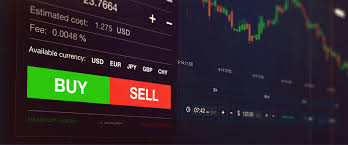
Beginner Forex Trading: A Comprehensive Guide
Welcome to the fascinating world of forex trading! As a beginner, understanding the basics of foreign exchange markets is crucial to your success. This guide will take you through the fundamental concepts of forex trading, essential strategies, and vital tips to help you get started. If you’re looking for reliable beginner forex trading Trading Brokers in Vietnam, we will touch on that as well as we dive deeper into this exciting field.
What is Forex Trading?
Forex, short for foreign exchange, refers to the global marketplace where currencies are traded. It’s the largest financial market in the world, with a daily trading volume exceeding $6 trillion. Forex trading involves buying one currency while simultaneously selling another, and it’s typically conducted via brokers or financial institutions. The goal is to profit by predicting how currencies will fluctuate in value against each other.
Understanding Currency Pairs
Currencies are traded in pairs, such as EUR/USD (Euro/US Dollar) or GBP/JPY (British Pound/Japanese Yen). In each pair, the first currency is the base currency, and the second is the quote currency. The price of the pair indicates how much of the quote currency is needed to purchase one unit of the base currency. Understanding currency pairs is essential as they represent the foundation of all forex trading.
Types of Forex Market Participants
The forex market comprises various participants, including:
- Retail Traders: Individual traders who buy and sell currencies through online brokers.
- Institutional Traders: Large organizations, such as banks and hedge funds, trading significant volumes.
- Central Banks: National banks that implement monetary policy by influencing currency values.
- Corporates: Businesses that engage in foreign trade, often needing to hedge against currency fluctuations.
Getting Started with Forex Trading
If you’re new to forex trading, here’s how to get started:
1. Educate Yourself
Knowledge is your most valuable asset as a trader. Read books, take online courses, and follow reputable trading blogs to deepen your understanding of forex concepts. Familiarize yourself with essential trading terminologies such as pips, spreads, leverage, and margin.
2. Choose a Reputable Broker
Selecting a trustworthy forex broker is paramount. Look for brokers that are regulated by reputable authorities, offer competitive spreads, and provide a user-friendly trading platform. Reading reviews and comparing broker features will help you make an informed decision.
3. Develop a Trading Plan
A trading plan is a crucial element for your success. Define your trading goals, risk tolerance, and preferred trading style (scalping, day trading, swing trading, etc.). Having a clear plan helps you maintain discipline and avoid emotional trading.
4. Practice with a Demo Account

Before risking real money, practice your trading skills with a demo account. Most forex brokers offer demo accounts where you can trade with virtual money. This experience helps you familiarize yourself with the trading platform and test your strategies without financial risk.
5. Learn Basic Analysis Techniques
Traders typically use two primary analysis methods:
- Fundamental Analysis: Involves looking at economic indicators, interest rates, and political events that can affect currency values.
- Technical Analysis: Focuses on statistical trends based on historical price movements, often using charts and indicators.
Key Strategies for Beginner Traders
As a beginner, understanding and implementing effective strategies can significantly impact your trading success. Here are a few basic strategies to consider:
1. Trend Following
This strategy involves identifying the direction of the market and trading in that direction. Look for clear trends on price charts, and enter your trade when you have confirmation of the trend.
2. Range Trading
Range trading focuses on identifying support and resistance levels within a specific price range. Traders can buy at support levels and sell at resistance levels, capitalizing on price fluctuations.
3. Breakout Trading
Breakout trading aims to enter the market when the price breaks out of a defined support or resistance level. This strategy can lead to significant profits if done correctly, as breakouts can result in strong price movements.
Managing Risk in Forex Trading
Risk management is a vital aspect of forex trading that helps limit losses and protect your trading capital. Here are some fundamental risk management techniques:
- Set Stop-Loss Orders: Use stop-loss orders to minimize potential losses by automatically closing a trade when the price reaches a specific level.
- Risk Only a Small Percentage: Limit your risk on each trade to a small percentage of your total capital, generally 1-2%.
- Diversify Your Trades: Avoid putting all your capital in a single currency pair; diversify your trades across multiple pairs to mitigate risk.
Conclusion
Jumping into the world of forex trading can be both exciting and overwhelming, especially for beginners. However, by taking the time to educate yourself, developing a robust trading plan, and practicing sound risk management, you can set the foundation for successful trading. Remember that forex trading carries risks, and it’s essential to approach it with a clear mind and solid strategies. Happy trading!
